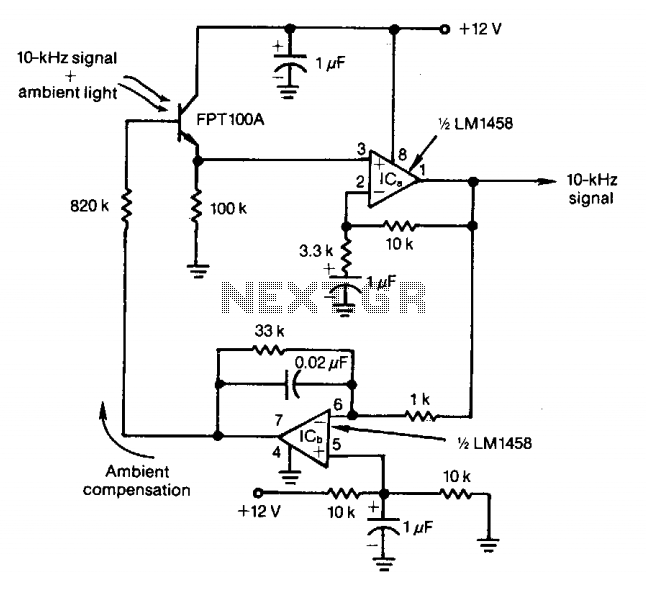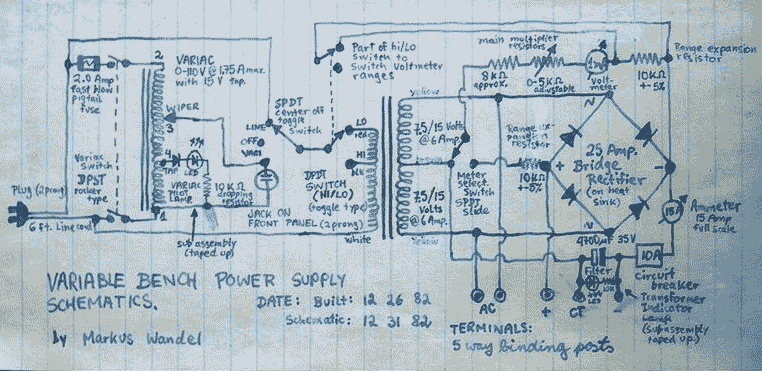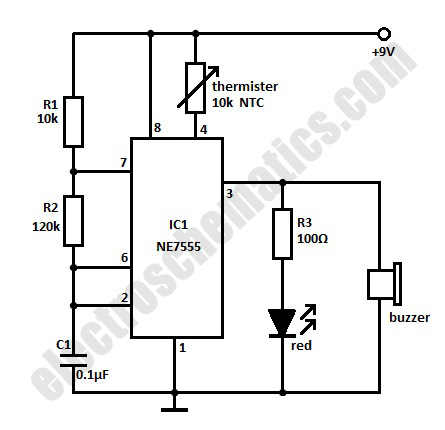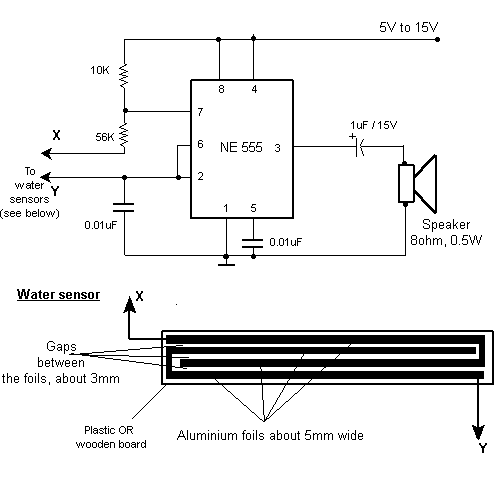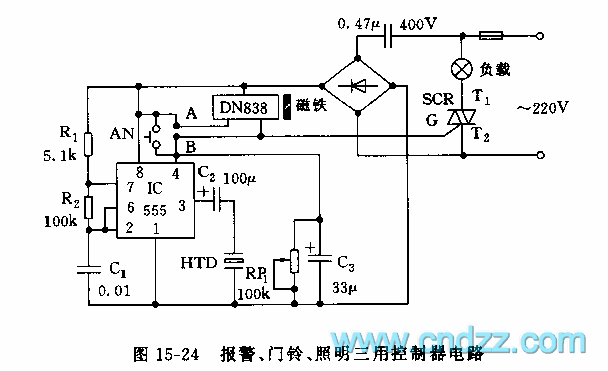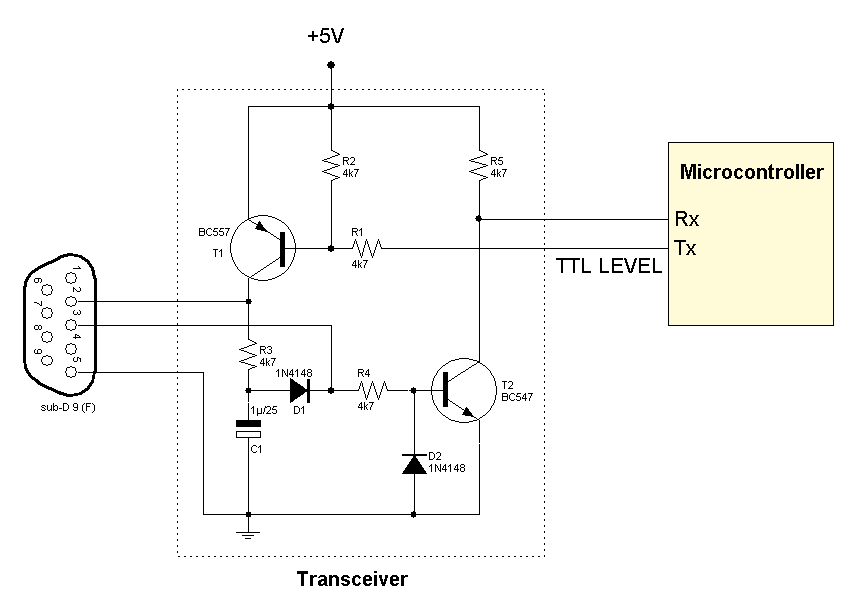
A double-tuned amplifier circuit
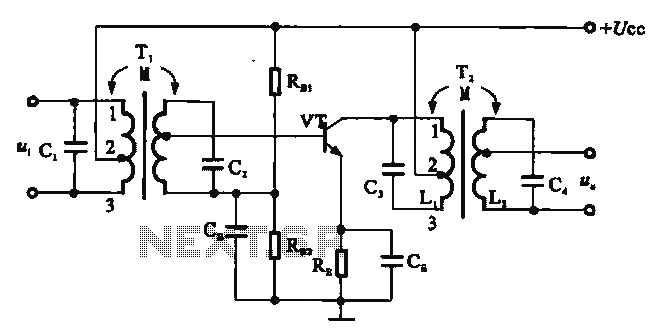
There are two resonant circuits in a double-tuned amplifier circuit, which consists of transformers T1 and T2 with primary and secondary coils that include parallel resonance capacitors. This circuit exhibits a resonance function and can be classified based on the coupling type into mutual coupling and capacitive coupling. Figure 3-20 illustrates this concept. Figure (a) depicts the mutual inductance coupling double-tuned amplifier, which is similar to a single-tuned amplifier but utilizes inductors L1 and C3 in place of a single secondary winding. The mutual coupling between the primary and secondary coils can be altered by changing the distance between L1 and L2. Figure (b) illustrates the capacitive coupling amplifier, where the degree of coupling is modified by adjusting an external capacitor Ck between the two tuners.
The double-tuned amplifier circuit is a specialized electronic configuration that enhances signal amplification by utilizing two resonant circuits. Each resonant circuit is designed to resonate at a specific frequency, allowing for improved selectivity and gain at that frequency. The transformers T1 and T2 serve as the core components of this configuration, with their primary and secondary coils strategically arranged to achieve the desired coupling effect.
The mutual coupling configuration, as depicted in Figure (a), relies on the magnetic interaction between the inductors. By adjusting the physical separation between inductors L1 and L2, the mutual inductance can be varied, thereby influencing the overall coupling coefficient. This adjustment enables fine-tuning of the amplifier's frequency response, allowing it to selectively amplify signals at the resonant frequency while attenuating others. The use of capacitors, such as C3, in conjunction with the inductors further refines the tuning process, ensuring that the amplifier operates efficiently within its intended frequency range.
On the other hand, the capacitive coupling configuration illustrated in Figure (b) employs an external capacitor, Ck, to control the coupling between the two tuners. This method allows for a more flexible tuning process, as the degree of capacitive coupling can be altered without physically moving the inductors. By adjusting the capacitance, the amplifier can be optimized for different signal frequencies, making it versatile for various applications.
Overall, the double-tuned amplifier circuit is an essential component in radio frequency (RF) applications, where precision and selectivity are crucial. Its design facilitates enhanced performance in communication systems, audio processing, and other electronic devices that require reliable signal amplification.There are two resonant circuits tuned amplifying circuit known as a double tuned amplifier circuit, i.e. the transformer Ti, T2 of the primary and secondary coils are provided has parallel resonance capacitor
has a resonance function. Depending on the coupling can be divided into two mutual coupling and capacitive coupling type Peng, Figure 3-20 below. Figure (a) shows the mutual inductance coupling double tuned amplifier which is tuned amplifier with the single exception that use Ll, C3 tuned circuit tuned circuit in place of a single secondary winding.
Using mutual coupling between the tough, secondary, or core that is changing the distance between the position of Li and Li can change their degree of coupling. Figure (b) shows the level of capacitive coupling amplifier tuned by changing an external capacitor Ck two tuners back road between the degree of coupling.
The double-tuned amplifier circuit is a specialized electronic configuration that enhances signal amplification by utilizing two resonant circuits. Each resonant circuit is designed to resonate at a specific frequency, allowing for improved selectivity and gain at that frequency. The transformers T1 and T2 serve as the core components of this configuration, with their primary and secondary coils strategically arranged to achieve the desired coupling effect.
The mutual coupling configuration, as depicted in Figure (a), relies on the magnetic interaction between the inductors. By adjusting the physical separation between inductors L1 and L2, the mutual inductance can be varied, thereby influencing the overall coupling coefficient. This adjustment enables fine-tuning of the amplifier's frequency response, allowing it to selectively amplify signals at the resonant frequency while attenuating others. The use of capacitors, such as C3, in conjunction with the inductors further refines the tuning process, ensuring that the amplifier operates efficiently within its intended frequency range.
On the other hand, the capacitive coupling configuration illustrated in Figure (b) employs an external capacitor, Ck, to control the coupling between the two tuners. This method allows for a more flexible tuning process, as the degree of capacitive coupling can be altered without physically moving the inductors. By adjusting the capacitance, the amplifier can be optimized for different signal frequencies, making it versatile for various applications.
Overall, the double-tuned amplifier circuit is an essential component in radio frequency (RF) applications, where precision and selectivity are crucial. Its design facilitates enhanced performance in communication systems, audio processing, and other electronic devices that require reliable signal amplification.There are two resonant circuits tuned amplifying circuit known as a double tuned amplifier circuit, i.e. the transformer Ti, T2 of the primary and secondary coils are provided has parallel resonance capacitor
has a resonance function. Depending on the coupling can be divided into two mutual coupling and capacitive coupling type Peng, Figure 3-20 below. Figure (a) shows the mutual inductance coupling double tuned amplifier which is tuned amplifier with the single exception that use Ll, C3 tuned circuit tuned circuit in place of a single secondary winding.
Using mutual coupling between the tough, secondary, or core that is changing the distance between the position of Li and Li can change their degree of coupling. Figure (b) shows the level of capacitive coupling amplifier tuned by changing an external capacitor Ck two tuners back road between the degree of coupling.
